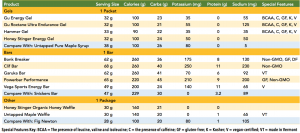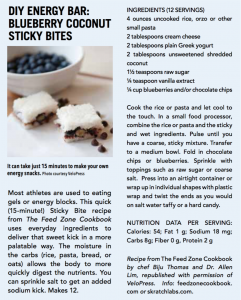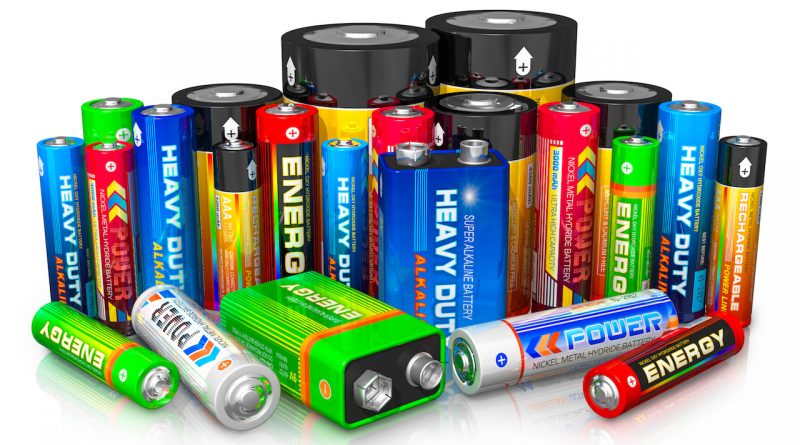Your Guide To Endurance Fuel
There’s nothing new about needing a portable bit of fuel if you’re out on the trail or doing an endurance race. Our ancestors may have used meat jerkies; our parents might have packed trail mix, or stuffed a PB&J or banana in their jerseys.
That all changed when PowerBar came on the market in 1986, and the concept of energy bars was born. Now, energy bars and gels are standard fare for most endurance athletes. And with ever- changing subcategories touting added protein, electrolytes, superfoods, caffeine and more, it’s no wonder that many people are confused about what type of bar or gel is best and when they should be used.
Let’s break down exactly what these products offer so you can understand how to use them best.
FUEL UP FOR THE LONG HAUL
When we exercise, the majority of our energy comes from carbohydrates. Our bodies have the ability to store carbohydrates in the form of glycogen in our muscles and liver. Unfortunately, these stores are limited, and can only power us for about two hours of moderately intense activity. Once our glycogen stores are tapped out, so are we, causing us to hit the proverbial wall unless we are able to take in additional fuel.
That’s where energy bars and gels come into play. If you can provide your body with an in flux of sugar, you are less reliant on glycogen, and can thus continue to exercise well beyond that two-hour mark.
That is by no means justification for eating a king-size Snickers bar on your next five-mile bike ride. If you are planning on embarking on a hike, ride or run lasting longer than 75 minutes, you will need to take in about 30 to 60 grams of carbohydrates per hour in order to keep muscles fueled and spare that precious glycogen. Athletes participating in ultra-endurance events need even more, with studies suggesting an ideal intake of 60 to 90 grams of carbohydrate per hour.

BAR VS. GEL VS. ??
What you choose, bar or gel or other food, should be based on both your sport of choice as well as the sensitivity of your stomach. Both bars and gels are made for portability and convenience and should provide ample carbohydrates in the form of simple sugars.
However, they tend to differ greatly in fiber, protein and even fat content. Because bars are typically higher in these other nutrients, they are ideal for longer efforts (yay for no growling stomach!) and sports that don’t jostle the stomach. They also work well for activities that allow for rest breaks where you have time for proper digestion.
Gels, on the other hand, will rarely contain fiber or fat and only negligible amounts of protein. This means gels are easier to digest, which makes them ideal for high impact activities like running. Due to their quick-to-digest nature, they are less filling and therefore may not be ideal if you are tackling a full day hike.
Of course, this is all great in theory, but in the end it truly comes down to how well your stomach tolerates various products. Some runners would have no problem downing a pint of ice cream mid- run (congrats to this year’s Brain Freeze 5K winner) while others may experience cramps from even a bit of solid food on a leisurely hike. Training with various products is the best way to learn what works best for you during your activity. You will also have to consider how much you will need to consume in order to stay fueled.
WHAT TO LOOK FOR
Once you’ve determined if a bar or gel is more to your liking, the next thing to consider are the ingredients. Select a product that provides you with multiple fuel sources. Those that contain both glucose and fructose allow our bodies to absorb more fuel per hour and thus deliver energy more readily to our working muscles. If you don’t see the words “glucose” and “fructose” on the ingredients list, look for ingredients like maltodextrin (glucose), honey and tapioca syrup (which contain both glucose and fructose), to ensure you are getting the fastest absorption rate possible. Bars may even tout slower-to-digest sources of carbohydrates like oats or whole wheat our. These sources of carbohydrates are more difficult on the stomach, so consider what activity you’re using it for.
Another ingredient you will see popping up in bars and gels alike is branched chain amino acids (BCAAs). BCAAs consist of three essential amino acids: leucine, valine and isoleucine. They are becoming an increasingly popular additive due to research that shows they can prevent the breakdown of muscle tissue during exercise. In one such study, trained runners performed a 25k run during which they consumed a placebo or a solution containing BCAAs and a small amount of carbohydrate. Runners who received the BCAA solution had lower levels of lactate dehydrogenase, a marker of muscle damage.
Caffeine is commonly found in both bars and gels, thanks to numerous studies that have shown that caffeine boosts athletic performance. Most caffeinated bars and gels contain 20 to 50 mg per serving, but buyer beware; more is not necessarily better. Too much caffeine can produce negative side effects, so stick to no more than 50 mg per hour during exercise.
Electrolytes are the main thing that sets sports nutrition products apart from alternatives like candy and dried fruit. Electrolytes include sodium, magnesium, phosphorous and potassium and play an important role in hydration. If your bar or gel does not contain any electrolytes, then you may need to consider an electrolyte replacement (such as a sports drink) during activities in higher temperatures, particularly if you tend to sweat a lot.
AND WHAT TO WATCH FOR
As benign as an energy bar or gel might seem, it’s important to check for ingredients that may impair your performance, too. Sugar alcohols such as sorbitol, malitol and xylitol are used to sweeten products without adding a lot of calories, but they may cause diarrhea and have landed many an unsuspecting athlete in a Port-O-Let.
Athletes should also be wary of any ingredients like artificial colors and flavors. The effect these ingredients have on our overall health as well as our performance has been hotly debated, but many products don’t include any artificial ingredients.
For those who would rather go the whole food route, there are certainly alternatives to packaged  bars and gels. Skratch Labs, a small company founded by two professional cyclists, produced The Feed Zone Cookbook, with recipes for portable foods for endurance athletes (see box below). In addition, dried fruit and candy are popular fuel options for athletes looking to keep things more natural. It is important, however, to keep in mind that energy bars and gels are specifically formulated to optimize performance, and many of our natural options may fall short in areas like electrolytes or the proper blend of sugars.
bars and gels. Skratch Labs, a small company founded by two professional cyclists, produced The Feed Zone Cookbook, with recipes for portable foods for endurance athletes (see box below). In addition, dried fruit and candy are popular fuel options for athletes looking to keep things more natural. It is important, however, to keep in mind that energy bars and gels are specifically formulated to optimize performance, and many of our natural options may fall short in areas like electrolytes or the proper blend of sugars.
The last thing to take into account is perhaps the most important: taste matters. The best sports nutrition product is worthless if you can’t get it down. Fortunately, there are a seemingly endless variety of flavors and consistencies from chocolate peanut butter (my personal fav) to cucumber melon, so experiment until you find the fuel that works for you. You will notice the difference.
As the Director of Nutrition at The Edge in Burlington, Jamie Sheahan works with athletes to develop customized fueling plans to optimize health and performance. An avid runner, she has completed 20 marathons.



